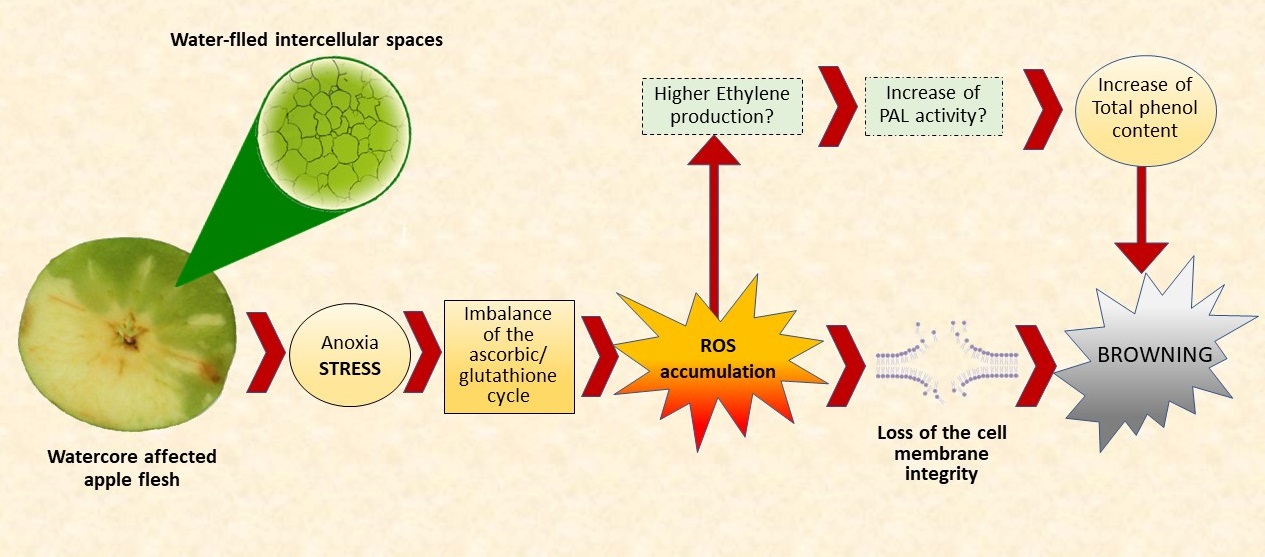
Published 2020-02-26
Keywords
- antioxidant activity,
- ascorbic acid,
- dehydroascorbic acid,
- Malus x domestica Borkh.,
- polyphenols
- texture ...More
How to Cite
Abstract
The study aimed to evaluate apple fruit affected by watercore by a physical and biochemical point of view and, at the same time, to gain an insight into the mechanisms of the watercore-related oxidative stress and browning. Fruit of the cv. Pomella Genovese (Malus x domestica Borkh.) were harvested in three different orchards and stored at 1°C (85-90% RH) for 4 months. The following analysis were performed on the fruit flesh: density, mechanical (firmness and stiffness) and acoustic (crispness) parameters, soluble solids content (SSC), titratable acidity, ascorbic acid (AA), dehydroascorbic acid (DHA), total phenols and antioxidant activity (DPPH). In all the three orchards, fruit affected by watercore (W-Fruit) had a higher density and SSC than watercore-free ones (WF-fruit), probably because of the sugar-rich liquid that accumulates in the intercellular spaces. The peel colour of the W-fruit was darker, their flesh was firmer and crispier and the content in total phenols increased with respect to the WF samples. Watercore led to a decrease of AA and to an increase of DHA, probably caused by an imbalance of the ascorbic-glutathione cycle. The altered AA/DHA ratio can indicate an oxidative stress status of the fruit. DPPH was higher in W fruit and was related to the phenol content (r=0.83) but not with AA.





